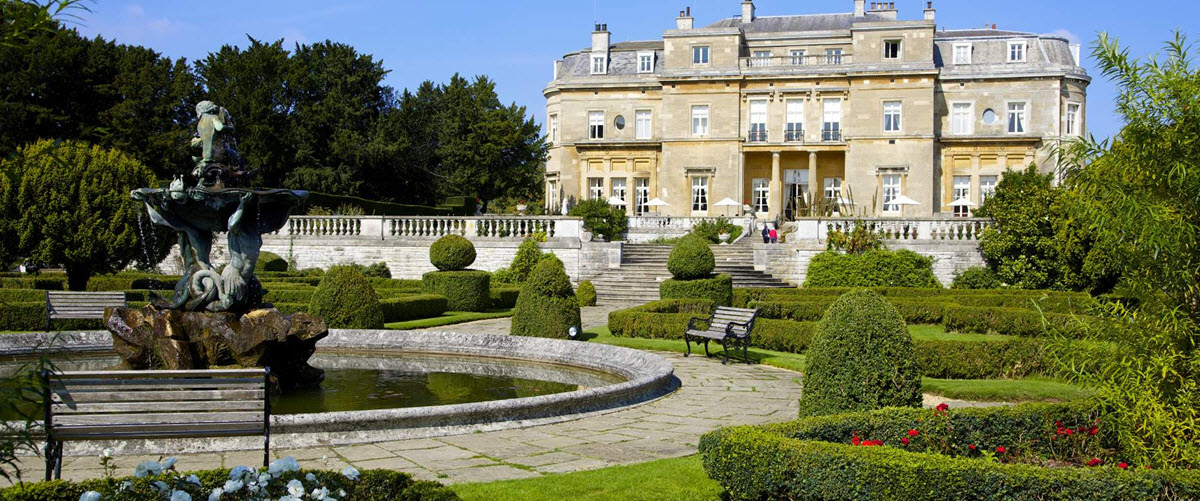Contents
The present manor house at the Luton Hoo estate was built for the 3rd Earl of Bute in the 18th century. Work commenced in 1767, following drawings made by the neoclassical Scottish architect Robert Adam. The original plan was to built a completely new house, but this plan was never fully executed and focus shifted to remodelling the older house on the site instead.
In 1843, a devastating fire destroyed much of the house, and it remained in this damaged state until John Shaw Leigh purchased the estate five years later.
The manor house is Grade I listed.

Where is Luton Hoo?
Luton Hoo is found in Bedfordshire and Harpenden in Hertfordshire, England. Most of the estate lies within the civil parish Hyde, in Bedfordshire.
Is it open to the public?
Since 2007, the Luton Hoo manor house has been a luxury hotel run by Elite Hotels. The Luton Hoo Hotel, Golf, and Spa features over 200 bedrooms and suits. When the property was converted into a hotel, the second floor of the house – which was included in the plans drawn up by the original architects – was rebuilt.
The surrounding estate is still owned by the descendants of Sir Julius and Lady Alice Wernher.
What’s a hoo?
The Saxon word hoo means the spur of a hill. In Old and Middle English, hōh (with various spellings) denoted a strip of land, a peninsula, a spur, or a ridge.
The walled garden
The Luton Hoo estate contains a 5-acre octagonal walled garden that’s been here since the late 1760s when it was established by John Stuart, 3rd Earl of Bute. In the later part of the 1800s, the Leigh family added several heated glasshouses to provide the estate with fresh fruit and flowers.
The Walled Garden is usually open to visitors every Wednesday from May to October.
On the big screen
Luton Hoo can be seen in many films, such as:
- Never Say Never Again
- The World is Not Enough
- Eyes Wide Shut
- A Shot in the Dark
- Four Weddings and a Funeral
- The Secret Garden
- Bright Young Things
- Enigma
Background
A family called de Hoo was living in a manor house on this site for centuries, until the death of Thomas Hoo, 1st Baron Hoo and Hastings, in 1455. The manor house came into the hands of the Rotherham family and the Napier family, and successive houses were built on the site. In 1751, Francis Herne inherited the house from his relative Miss Napier. In 1762, John Stuart, 3rd Earl of Bute, purchased the estate from Herne for £94,700. After his stint as Prime Minister in 1762-1763, the Earl decided to devote his time to developing the Luton Hoo estate.
https://www.youtube.com/watch?v=fH7dUHMQbIA
The 3rd Earl of Bute epoch
The 3rd Earl of Bute engaged the architect Robert Adam to build the current manor house at Luton Hoo. The original plans for a completely new building wasn’t executed and much of the work instead went into remodelling the older house. Work started in 1767, and by 1774, the house was inhabited, despite not yet being completed.
The landscape designer Capability Brown was hired redesign the park and enlarge it from roughly 300 acres to 1,200 acres. Brown utilized the River Lea to create two lakes on the property.
The 2nd Marquess of Bute epoch
Around the year 1830, the house went through a major transformation in the hands of the 3rd Earl’s grandson, John Crichton-Stuart, 2nd Marquess of Bute. The Marquess hired the architect Robert Smirke to redesign the house, except for the south front, and this is how it got much of its current form, including the massive portico. (Robert Adam had actually designed a similar portico for the house, but it had never been built back in the 18th century.)
